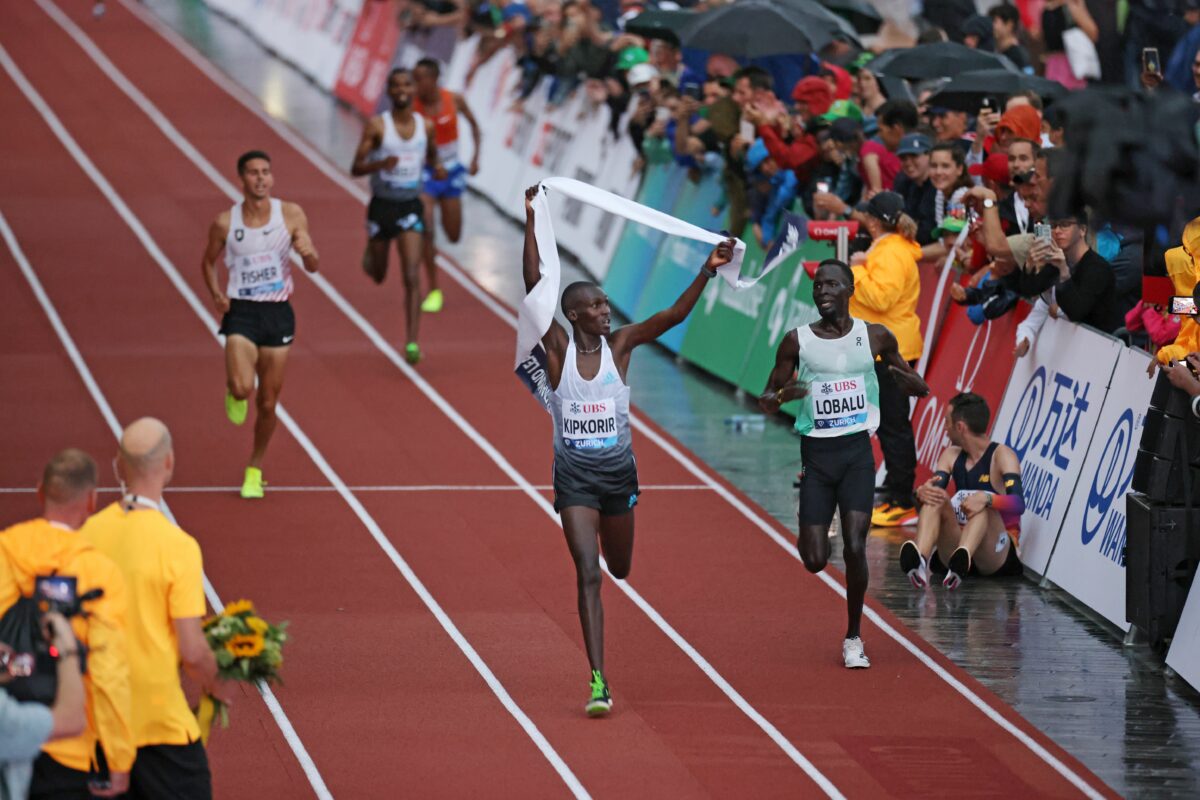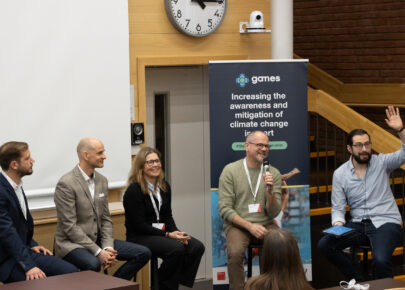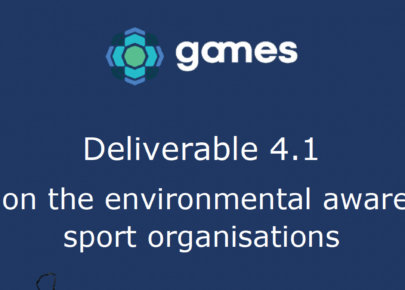Decarbonisation and environmental audits unveil initial GAMES project insights
An important aspect of the GAMES project is carrying out a decarbonisation and environmental sustainability audit for each sporting context involved in the project. In the final quarter of 2022, Sant’Anna School of Advanced Studies from the University of Pisa conducted the first two audits of events organised by fellow partners involved in GAMES – both occurring in the Swiss city of Zürich.
The first was at the Weltklasse Zürich athletics meeting on 7/8 September 2022, a World Athletics-sanctioned event which served as the Wanda Diamond League finale. Day one of the event took place on the Sechläutenplatz in the centre of the city, while day two returned to the more traditional setting of the 26,800 capacity Letzigrund Stadium. An audit of the three facilities used for the Men’s World Floorball Championships (WFC) – Swiss Life Arena, AXA Arena and the Sporthalle Stighag practice facility – was then conducted from 5-13 November.
Context
The audits’ goal was to observe environmental management practices at the events and identify improvement actions to be implemented in the future. The primary techniques used were:
- Visiting facilities
- Interviewing management of event staff
- Reading documents associated with events
The audits did not solely focus on the direct effects of the events on climate change, but assessed the wider environmental aspects that could influence climate change from a life cycle perspective. The criteria to assess these aspects were:
- Mobility of supporters, athletes and staff
- Waste management
- Water management
- Energy management
- Use of materials
- Food and beverage activities
- Environmental governance actions
The multiple locations used for both the Diamond League finale and WFC 2022 was a primary reason behind both events being selected for audits, as it increases result replicability. The robustness of our scientific approach to analyse event documents prior to the audit, performing the audit and conducting interviews where required, was guaranteed by the presence of sustainability management researchers who were also certified ISO14001 environmental auditors.
Via its already established ‘Green Goal’ initiative, the Swiss Floorball Federation (SFF), organisers of WFC 2022, declared prior to the event that it aimed for the event to be the first ever climate neutral WFC.
Findings and Recommendations
There were numerous areas of investigation that produced similar findings and recommendations between both events, the first being accommodation.
For the Diamond League, staff and athletes were hosted at the Crowne Plaza Zürich. Although closely connected to Sechläutenplatz and Letzigrund Stadium, as well as the hotel being part of the IHG Green Engage system, foreseeing the implementation of some environmental criteria, we couldn’t assume any sustainability criteria was used to select the hotel. However, it emerged from an interview that new hotels would be selected for future editions that partly take into account sustainability practices.
In the case of WFC, we recommend that future editions have a more systematic approach to selecting hotels with environmental certifications (e.g. EU Ecolabel) and communicating this to participating teams. For WFC 2022, SFF drafted a list of hotels for teams to stay in that considered criteria like price and distance from the event, but did not fully consider green criteria. Providing a large variety of accommodation options are a requirement of the International Floorball Federation (IFF) because the financial resources of each teams differ substantially, so we believe this is an important avenue to pursue.
The second common area of investigation between the two events was waste production and management. At day one of the Diamond League finale at Sechläutenplatz, we concluded that more waste was produced than necessary because, for example, many souvenirs made of paper and plastic had unnecessary plastic packaging. Separated collection was available, but not in enough locations relative to the number of fans at the event. Moreover, glass was not separately collected.
At Letzigrund Stadium, ‘paper clappers’ were distributed to fans, an example of materials being produced (the same result can be achieved by clapping hands). Even if recycled, the total lifecycle of paper clappers produces significant environmental impacts. In the media area, printed documents with the athletes’ biographies were printed and provided to journalists and press staff. An interview highlighted that younger generations are keener to use digitalised data, but older generations still rely on printed information. Food plates were made of paper, but they were not reusable and it was uncertain whether they were compostable.
Separated collection occurred for plastic and glass at Letzigrund Stadium, but not paper and cardboard. This was despite separate paper and cardboard collection normally occurring, according to the Zürich waste collection program. Moreover, food kiosks were not managing waste in the same way. For example, some collected plastic bottles, whereas others disposed them in undifferentiated waste bins. There were often only undifferentiated bins next to the kiosks, and even when plastic bins were present, they much smaller compared to the undifferentiated one. Considering the Swiss waste management system, it is likely that at least a high percentage of undifferentiated waste was sent directly to energy recovery. Even though it is a better solution than landfill, separated collection allows for material recycling, which would be the preferred option both in terms of circular economy and decarbonisation.
At Swiss Life Arena, bars did not use reusable cups, drinks were served in plastic cups and considering the 12,000 seat capacity of the arena, reusable cups would greatly reduce the production of plastic waste. Despite bins being structured with three different holes to differentiate waste, separate collection did not occur. At the end of matches, cleaners collected waste between spectators’ seats, but used black bags to collect all of it, implying it wasn’t going to be separated. At AXA Arena, there were separate bins for PET, aluminum and unsorted waste. Some cleaners collected waste left on the floor between seats but, contrary to Swiss Life Arena, they collected waste separately. However, we witnessed a cleaner put the separated collection of aluminum cans into unsorted waste collection. When asked why they did this, they informed us that there was a problem with the aluminum recovery plant.
Our recommendations here are two-fold. First, there should be a representative of the organiser that supervises waste management after matches. Second, because aluminum is an ‘expensive’ type of waste, there should be swift corrective action when encountering a problem such as those experienced at the aluminum plant by planning ahead with, for example, an alternative environmentally friendly disposal source.
Within the arenas at both the Diamond League and WFC, the presence of LED lights and screens was noted. However, the lights were switched on at Letzigrund Stadium while there was still daylight, thus consuming unnecessary energy. Sporthalle Stighag, however, was opened in 2019, meaning it has a high standard of energy efficiency with its LED lights.
Finally, we believe education opportunities for fans at both the Diamond League and WFC could be improved. At Letzigrund Stadium, no open sustainability awareness raising activity or sustainability-related panels were present. However, organisers did screen two sustainability-related videos on the LED screens in the stadium, one comprised of environmental messages from high profile athletes and another about World Athletics’ air quality campaign. We suggest that WFC organisers adopt various tools to engage in specific initiatives aimed at raising the environmental awareness of the spectators, such as showing video messages on screens like the Diamond League organisers, as well as informative panels to discuss sustainability.
There are a host of other findings and recommendations from our audits at each event, ranging from food sources to innovative wooden toilets.
Conclusion
Both environmental audits shed light on actions associated with major World Athletics and International Floorball Federation events; some were expected, while others were more revealing. The audits will have implications for future events hosted by GAMES partners, but we also hope that readers across the sport industry will take learnings from the audits and implement them at their events.






